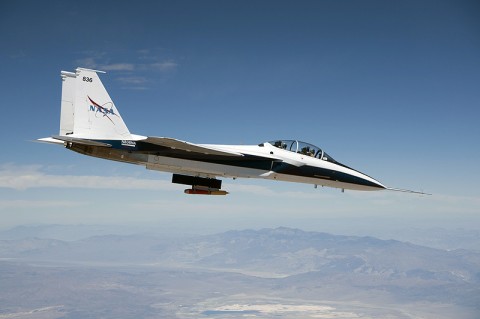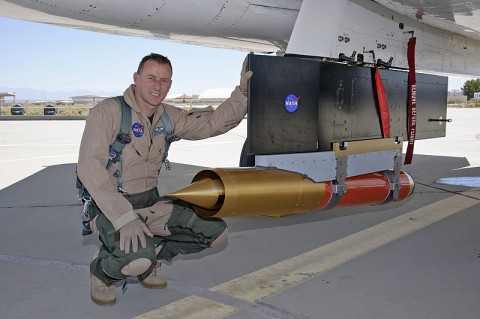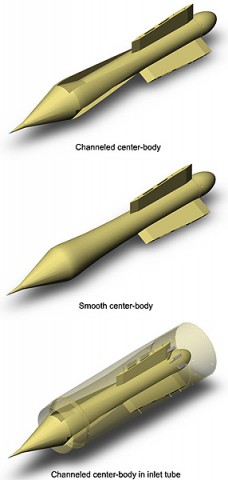Written by Gray Creech
NASA Dryden Flight Research Center
 Edwards, CA – Aeronautics researchers at NASA’s Dryden Flight Research Center recently completed flight tests of a unique experimental jet engine inlet design in the Channeled Center-body Inlet Experiment, or CCIE.
Edwards, CA – Aeronautics researchers at NASA’s Dryden Flight Research Center recently completed flight tests of a unique experimental jet engine inlet design in the Channeled Center-body Inlet Experiment, or CCIE.
The experimental inlet was checked out on NASA Dryden’s F-15B aeronautics research test bed aircraft, which continues to be an innovative and cost-effective tool for flight test of advanced propulsion concepts.

One center body is channeled; the other has a conventional, smooth shape. The slots cut along the length of the channeled center body simulate a simple device that in an actual inlet would allow optimization of the amount of air flowing into the engine, resulting in improved airflow efficiency at a wide variety of speeds. This would improve fuel efficiency as well.

Six flights were flown, three with each center body installed. Flight tests were made incrementally at speeds up to Mach 1.74, or about 1.7 times the speed of sound. Flight data from the smooth center body were used to benchmark performance data for the channeled center body.

Data points that NASA Dryden engineers collected during the experiment included inlet mass airflow information, internal surface pressure distribution numbers, and airflow distortion, or turbulence, data at the exit end of the device.
Dryden propulsion engineers are now performing post-flight data analysis on the two inlet configurations and will report on the results. The resulting data will also be compared with computational fluid dynamics, or CFD, predictions.
Potential future applications for the simplified inlet design include its use on a new generation of supersonic cruise aircraft, reducing the complexity and weight of this important component of supersonic propulsion systems.
The CCIE inlet was developed by TechLand Research, Inc., of North Olmsted, Ohio, through a NASA Small Business Innovation Research contract.
The CCIE project is funded by NASA’s Aeronautics Research Mission Directorate and managed by the Supersonics Project in the directorate’s Fundamental Aeronautics Program.


